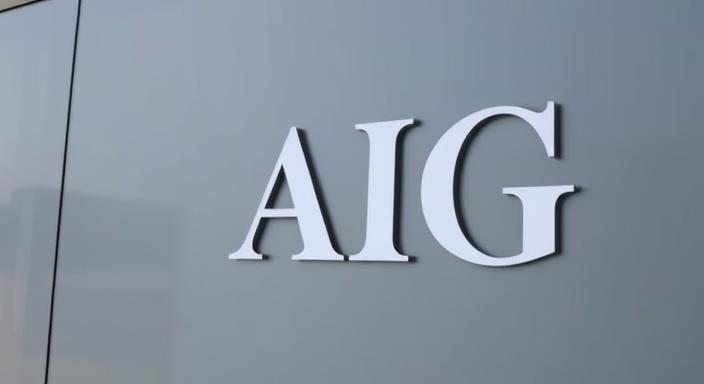Executive Summary: Setting the Standard in Cyber Risk Management
In today’s rapidly evolving digital landscape, cyber threats have emerged as one of the most significant risks facing organizations across all sectors. The sophistication and frequency of cyber attacks continue to accelerate, with ransomware demands reaching unprecedented levels and data breaches exposing sensitive information at an alarming rate. Within this challenging environment, cyber insurance has transformed from a niche product to an essential component of comprehensive risk management. We have conducted an extensive evaluation of the UK cyber insurance market to identify those providers that consistently deliver exceptional protection, service, and value when organizations face their most challenging digital crises.
Understanding the Cyber Insurance Landscape in 2025
The cyber insurance market has undergone dramatic evolution in recent years, shaped by escalating threat vectors, regulatory developments, and changing customer expectations. According to recent data from the Association of British Insurers, cyber insurance premiums in the UK have increased by approximately 32% annually over the past three years, reflecting both heightened risk awareness and expanding coverage requirements.
This growth has occurred against a backdrop of increasing claim frequency and severity. The National Cyber Security Centre reports that ransomware attacks against UK organizations increased by 64% in the past year alone, with average ransom demands now exceeding £1.3 million for mid-sized enterprises. Simultaneously, the implementation of the UK’s enhanced data protection framework has amplified regulatory exposure, with potential fines reaching up to £17.5 million or 4% of annual global turnover.
Methodology: Identifying the UK’s 5-Star Cyber Insurance Providers
Our comprehensive evaluation framework incorporates both quantitative and qualitative elements to ensure a holistic assessment of cyber insurance excellence. Key components of our methodology include:
- Policy Coverage Analysis: Detailed examination of policy wordings, exclusions, conditions, and limits across multiple risk scenarios.
- Premium Value Assessment: Evaluation of pricing structures relative to coverage breadth, taking into account industry-specific risk factors and organizational size.
- Claims Performance Review: Analysis of claims handling efficiency, settlement ratios, and dispute resolution processes.
- Risk Management Services: Assessment of pre-incident risk mitigation resources, including vulnerability scanning, employee training, and compliance guidance.
- Incident Response Capabilities: Evaluation of post-breach support services, including technical forensics, legal counsel, and crisis communications.
- Client Satisfaction Surveys: Extensive polling of current policyholders regarding their experience across the entire insurance lifecycle.
- Expert Panel Assessment: Input from cybersecurity professionals, insurance brokers, and risk management consultants.
This multifaceted approach ensures that our 5-Star recognition reflects genuine excellence across all dimensions of cyber insurance provision, rather than strength in isolated aspects of coverage or service.
The Elite Performers: UK’s 5-Star Cyber Insurance Providers
CFC Underwriting

CFC Underwriting has established itself as a market leader in the UK cyber insurance sector through its combination of technical expertise, innovative coverage design, and exceptional incident response capabilities. Their comprehensive cyber policy provides protection against a wide range of digital threats, including ransomware, social engineering fraud, system business interruption, and regulatory investigations.
Particularly noteworthy is CFC’s in-house incident response team, which maintains 24/7/365 availability and typically responds to initial breach notifications within 15 minutes. This integrated approach to incident management has resulted in 94% of ransomware attacks being successfully contained without payment, significantly outperforming industry averages.
CFC’s commitment to proactive risk management is evidenced by their advanced threat intelligence platform, which continuously monitors policyholders’ digital assets for vulnerabilities and emerging threats. This capability has enabled early intervention in approximately 30% of potential incidents before they escalated to full breaches.
Hiscox

Hiscox has distinguished itself through its sophisticated underwriting approach and tailored coverage solutions for organizations across various sectors and size categories. Their cyber policy framework delivers exceptional clarity in wording while maintaining the flexibility to address emerging threats and regulatory developments.
Their industry-leading claims satisfaction rate of 97% reflects both the quality of their incident response orchestration and the efficiency of their settlement processes. Hiscox’s panel of specialist partners encompasses elite forensic investigators, legal counsel, and crisis communications experts, ensuring comprehensive support throughout the incident lifecycle.
Hiscox’s CyberClear Academy provides policyholders with access to sophisticated training modules that have demonstrably reduced human-factor vulnerabilities by up to 60% among participating organizations. This commitment to risk reduction extends to their virtual Chief Information Security Officer (vCISO) service, which delivers enterprise-grade security guidance to small and medium enterprises.
AIG

AIG’s cyber insurance offering combines financial strength with technical sophistication, providing policyholders with confidence in both coverage adequacy and claims-paying ability. Their policy structure addresses both traditional cyber risks and emerging exposures such as cryptojacking, intellectual property theft, and reputation damage.
AIG has developed particular expertise in managing complex, multi-jurisdictional cyber incidents, with their global response network enabling coordinated management of breaches affecting international operations. Their dedicated breach response team has successfully managed over 22,000 incidents globally, building unparalleled experience across diverse attack vectors and regulatory regimes.
Their CyberEdge platform delivers comprehensive risk management resources, including vulnerability scanning, employee awareness training, and compliance templates. AIG’s commitment to continuous improvement is evidenced by their regular publication of anonymized claims insights, which provide valuable threat intelligence to the broader cybersecurity community.
Beazley

Beazley has leveraged its extensive experience in cyber risk to develop one of the market’s most sophisticated insurance propositions. Their Beazley Breach Response (BBR) service combines traditional indemnity protection with bespoke incident management support, tailored to the specific circumstances of each breach.
Their unique “pre-breach” services include access to expert legal counsel for privacy policy development, encryption strategy guidance, and incident response planning. This proactive approach has resulted in 28% fewer ransomware payments and 35% faster recovery times compared to industry benchmarks.
Beazley’s threat intelligence capabilities are particularly sophisticated, with their data science team analyzing patterns across thousands of incidents to identify emerging attack methodologies. This intelligence directly informs both underwriting approaches and risk management guidance, creating a virtuous cycle of continuous improvement.
Travelers
Travelers has established itself as a leader in the UK cyber insurance market through its combination of financial stability, technical expertise, and service excellence. Their cyber policy structure provides exceptional clarity regarding coverage triggers and exclusions, reducing uncertainty during incident response.
Their pre-breach risk management services include access to the Travelers eRisk Hub, which provides resources for incident response planning, regulatory compliance, and employee training. Travelers’ commitment to proactive risk reduction is further evidenced by their provision of vulnerability scanning and penetration testing services to qualified policyholders.
Travelers’ claims handling excellence is reflected in their average incident response time of under 30 minutes and their 95% policyholder satisfaction rating. Their panel of specialist partners includes leading forensic investigators, legal counsel, and crisis communications experts, ensuring comprehensive support throughout the breach lifecycle.
Critical Components of Superior Cyber Insurance
Comprehensive Coverage Architecture
The most sophisticated cyber insurance policies address the full spectrum of digital risks, encompassing both established and emerging threat vectors. Essential coverage elements include:
- Incident Response Costs: Coverage for technical forensics, legal counsel, notification expenses, and crisis communications support.
- Business Interruption Protection: Indemnification for income loss and extra expenses arising from system outages, including both direct attacks and dependent business interruption from third-party service providers.
- Extortion and Ransomware Coverage: Protection against ransom demands, including cryptocurrency payment facilitation and negotiation support.
- Data Recovery Expenses: Coverage for costs associated with restoring or recreating lost or corrupted data and software.
- Regulatory Defense and Penalties: Protection against investigation costs, legal defense expenses, and insurable regulatory fines.
- Media and Intellectual Property Liability: Coverage for claims arising from digital content, including copyright infringement, defamation, and privacy violations.
- Social Engineering Fraud: Protection against financial losses resulting from manipulated electronic communications.
- Reputational Harm Coverage: Indemnification for measurable financial losses resulting from damage to brand value or customer trust.
Leading providers distinguish themselves by offering clearly defined coverage for these exposures with minimal exclusions and conditions, providing policyholders with confidence in protection adequacy.
Integrated Incident Response Capabilities
Excellence in cyber insurance extends well beyond financial indemnification to encompass sophisticated incident response orchestration. The most effective providers deliver:
- 24/7/365 Breach Reporting Hotlines: Immediate access to technical and legal experts at the first sign of compromise.
- Coordinated Response Teams: Seamless integration of technical forensics, legal counsel, and communications expertise.
- Containment Expertise: Specialized capabilities in ransomware containment, credential theft mitigation, and malware eradication.
- Regulatory Notification Guidance: Expert advice on compliance with evolving breach notification requirements across jurisdictions.
- Crisis Communications Support: Strategic guidance on stakeholder communications to preserve reputation and trust.
- Business Continuity Assistance: Practical support for maintaining essential operations during system outages.
- Post-Incident Remediation: Guidance on security improvements to prevent recurrence and address vulnerabilities.
Top-performing providers have invested significantly in building these capabilities, recognizing that effective incident management directly impacts both claim severity and customer satisfaction.
Proactive Risk Management Services
Leading cyber insurers have transcended the traditional reactive insurance model to embrace proactive risk reduction. Superior providers offer:
- Vulnerability Scanning and Penetration Testing: Regular assessment of external-facing systems to identify security weaknesses.
- Employee Awareness Training: Customized education programs addressing social engineering, credential management, and security best practices.
- Compliance Guidance: Templates and consultative support for meeting regulatory requirements across jurisdictions.
- Incident Response Planning: Facilitated workshops and plan development to prepare for breach scenarios.
- Security Benchmarking: Comparative analysis of security controls against industry peers and best practices.
- Threat Intelligence Sharing: Regular updates on emerging attack methodologies and vulnerabilities.
- Virtual CISO Services: Access to security leadership expertise for strategic guidance and program development.
These value-added services not only reduce claims frequency and severity but also transform the insurer-policyholder relationship from transactional to consultative, enhancing retention and cross-selling opportunities.
Emerging Trends in Cyber Insurance Excellence
Quantitative Risk Assessment Methodologies
Leading cyber insurers are increasingly adopting sophisticated quantitative methods to assess and price digital risks. These approaches move beyond traditional questionnaire-based underwriting to incorporate:
- External Vulnerability Scanning: Automated assessment of internet-facing assets to identify security weaknesses.
- Dark Web Monitoring: Detection of compromised credentials and organizational data being traded in illicit marketplaces.
- Security Control Validation: Verification of implemented security measures beyond self-attestation.
- Industry Loss Data Analysis: Benchmarking against peer organizations to identify anomalous risk profiles.
- Scenario-Based Modeling: Quantification of potential loss scenarios based on threat actor capabilities and organizational vulnerabilities.
These methodologies enable more accurate risk differentiation and pricing, benefiting both insurers and security-mature policyholders who can demonstrate superior risk management.
Alignment with Zero Trust Security Models
Progressive cyber insurers are evolving their underwriting approaches and risk management guidance to align with zero trust security principles. This evolution encompasses:
- Identity-Centric Security Assessment: Evaluation of authentication controls, including multi-factor implementation and privileged access management.
- Micro-Segmentation Validation: Verification of network segmentation to contain potential breaches.
- Continuous Validation Requirements: Shifting from point-in-time assessments to ongoing security monitoring.
- Data-Centric Protection Models: Emphasis on protecting sensitive information rather than just perimeter defenses.
- Least Privilege Policy Enforcement: Verification of access controls based on minimum necessary permissions.
Insurers embracing these principles are better positioned to assess and mitigate risks in cloud-native and hybrid environments where traditional perimeter-based security models are increasingly obsolete.
Specialized Coverage for Emerging Technologies
The most innovative cyber insurers are developing tailored coverage solutions for emerging technologies and digital business models. These specialized offerings address:
- Internet of Things (IoT) Exposures: Coverage for physical damage and liability arising from compromised connected devices.
- Operational Technology (OT) Protection: Specialized coverage for industrial control systems and critical infrastructure.
- Cryptocurrency and Digital Asset Risks: Protection for blockchain-based assets and operations.
- Artificial Intelligence Liability: Coverage for errors, omissions, and discrimination claims arising from AI systems.
- Quantum Computing Threats: Forward-looking coverage for quantum-resistant encryption transition and associated risks.
By developing expertise in these emerging areas, leading insurers are positioning themselves to support innovation while managing the associated risks effectively.
Navigating the Cyber Insurance Selection Process
Effective Broker Engagement

Given the complexity of cyber risks and coverage options, effective broker engagement is essential for optimal policy selection. Organizations should seek brokers who demonstrate:
- Technical Cyber Expertise: Genuine understanding of digital risks beyond insurance market knowledge.
- Policy Wording Specialization: Ability to analyze and compare complex coverage terms and conditions.
- Claims Advocacy Experience: Track record of supporting policyholders through the claims process.
- Market Access: Relationships with multiple quality insurers to ensure competitive options.
- Risk Management Orientation: Focus on holistic cyber risk improvement rather than transactional placement.
The most effective broker relationships combine technical expertise with client advocacy, ensuring that coverage aligns with specific organizational risk profiles and priorities.
Optimizing the Application Process
The cyber insurance application process provides an opportunity to positively differentiate an organization’s risk profile. Best practices include:
- Executive Involvement: Engagement of senior leadership to demonstrate organizational commitment to cybersecurity.
- Documentation Preparation: Proactive compilation of security policies, incident response plans, and audit results.
- Technical Representative Availability: Inclusion of IT security leadership in underwriting meetings and discussions.
- Transparent Risk Communication: Honest disclosure of known vulnerabilities accompanied by mitigation plans.
- Demonstrable Security Improvements: Evidence of ongoing security program maturation and investment.
Organizations that approach the application process strategically can secure more favorable terms and conditions while building constructive relationships with underwriters.
Post-Binding Service Utilization
The value of cyber insurance extends well beyond the policy document to encompass associated services and benefits. Organizations should:
- Inventory Available Services: Comprehensively catalog all included risk management resources and services.
- Designate Service Owners: Assign responsibility for utilizing specific services to appropriate team members.
- Establish Regular Reviews: Schedule periodic assessments of service utilization and value realization.
- Maintain Insurer Communication: Develop ongoing relationships with underwriters and risk engineers.
- Document Security Improvements: Track and communicate risk reduction achievements to support favorable renewals.
Proactive utilization of included services not only maximizes return on premium investment but also demonstrates commitment to continuous security improvement.
Conclusion: The Future of Cyber Insurance Excellence
The landscape of cyber insurance continues to evolve rapidly, with innovative providers setting new standards for coverage, service, and value. The UK’s 5-Star cyber insurers share several common characteristics that position them at the forefront of this evolution:
- Sophisticated understanding of digital risks and threat actor methodologies
- Comprehensive coverage frameworks that address both established and emerging exposures
- Integrated incident response capabilities that minimize breach impact and business disruption
- Proactive risk management services that reduce claims frequency and severity
- Commitment to continuous improvement based on evolving threat intelligence and claims experience
As cyber threats continue to grow in sophistication and impact, partnership with a 5-Star cyber insurer represents not merely a risk transfer mechanism but a strategic advantage in digital risk management. Organizations that select their cyber insurance provider based on these criteria of excellence position themselves to navigate the challenging digital risk landscape with greater resilience and confidence.
For more information on managing cyber risks beyond insurance, organizations should consult resources from the UK National Cyber Security Centre and Information Commissioner’s Office to develop comprehensive security strategies that complement their insurance protection.